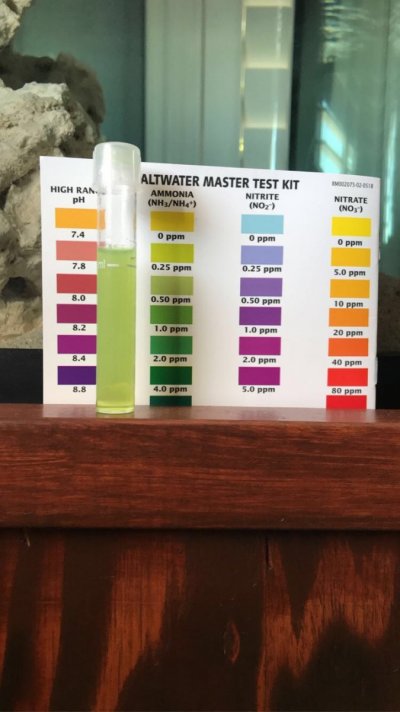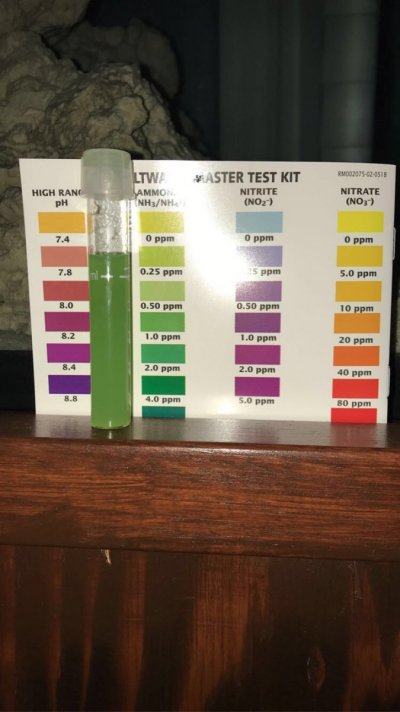- Joined
- Nov 18, 2015
- Messages
- 200
- Reaction score
- 111
I finally got my tank wet and decided to try a new cycle technique (new to me)
I'm doing a fish cycle using Ocean Direct sand and Dr Tim's one and only bacteria.
I added the water, sand, MarinePure Ceramic Biomedia 1 1/2 Spheres, and small (maroon) clown on Sunday Nov 2nd. I didn't test for ammonia or nitrite until Tue night Nov 9th. I tested with Salifert Ammonia and Nitrite test kits, but the the results shows Zero (clear) on both. I thought that was very odd. I've been over feeding the fish twice a day and expected to see some ammonia or nitrite, but maybe that defeats the purpose of a fish cycle. I don't want to kill the fish.
Am I missing something?
did the cycle not start yet?
is there such thing as an instant cycle?
Thoughts?

I'm doing a fish cycle using Ocean Direct sand and Dr Tim's one and only bacteria.
I added the water, sand, MarinePure Ceramic Biomedia 1 1/2 Spheres, and small (maroon) clown on Sunday Nov 2nd. I didn't test for ammonia or nitrite until Tue night Nov 9th. I tested with Salifert Ammonia and Nitrite test kits, but the the results shows Zero (clear) on both. I thought that was very odd. I've been over feeding the fish twice a day and expected to see some ammonia or nitrite, but maybe that defeats the purpose of a fish cycle. I don't want to kill the fish.
Am I missing something?
did the cycle not start yet?
is there such thing as an instant cycle?
Thoughts?
























